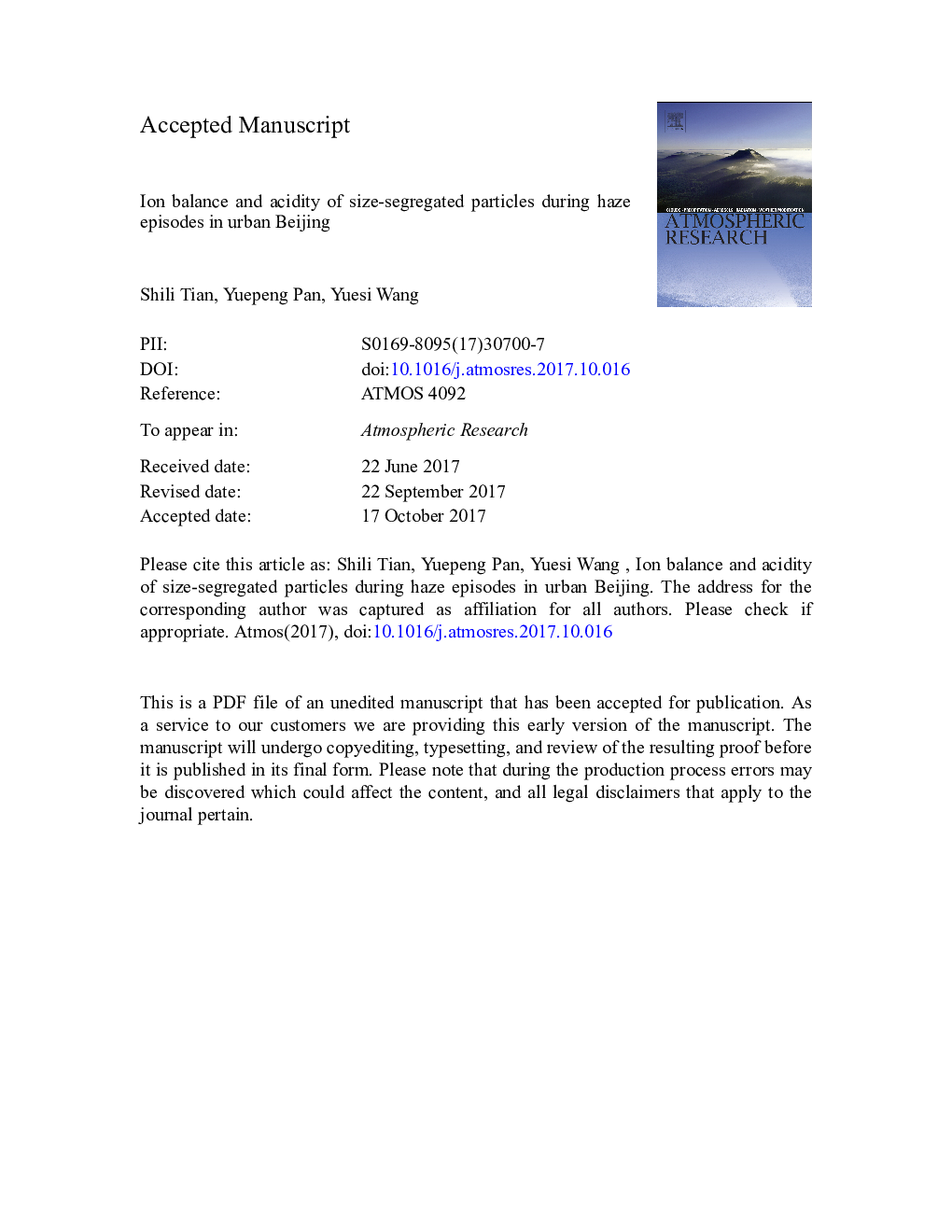| Article ID | Journal | Published Year | Pages | File Type |
|---|---|---|---|---|
| 8864841 | Atmospheric Research | 2018 | 23 Pages |
Abstract
In this study, we investigated how the ion balance causes variations in size segregated aerosol acidity and atmospheric processing on clean versus hazy days using a 9-stage sampler. We calculated the ratios (in charge equivalents, RC/A) between measured cations (Na+, NH4+, K+, Mg2 +, and Ca2 +) and anions (SO42 â, NO3â and Clâ) for different aerosol size fractions. The ratios were typically close to unity in the accumulation mode (0.65-2.1 μm), and increased significantly when the particle size increased or decreased. In the coarse size range (aerodynamic diameter > 2.1 μm), high RC/A values were most likely caused by the undetermined CO32- and HCO3- content of the mineral dust. In contrast, the high RC/A values for submicron aerosols (< 1.1 μm) were likely caused by the presence of water-soluble organic anions. The RC/A values for all size fractions were lower on hazy days than clean days, indicating that aerosol acidity was enhanced on polluted days. Simiar temporal trend between RC/A and in-situ pH indicated that RC/A was a good indicator of aerosol acidity in fine mode aerosol. The SO42 â and NO3â contents in fine particles were completely neutralized as the RC/A values for PM2.1 approached unity, and mean values of RC/A were 1.34 and 1.16 during the transition and polluted periods, respectively. The lowest RC/A values were observed in the size fraction with the highest concentrations of SO42 â, NO3â and NH4+ (SNA) and concentrations of SNA increased with the increasing aerosol acidity. Significant correlations between [NO3â]/[SO42 â] and [NH4+]/[SO42 â] during NH4+-rich conditions in fine size fractions indicated fine mode NO3â in Beijing was mainly formed by gas-phase homogeneous reaction between the ambient NH3 and HNO3.
Related Topics
Physical Sciences and Engineering
Earth and Planetary Sciences
Atmospheric Science
Authors
Shili Tian, Yuepeng Pan, Yuesi Wang,
